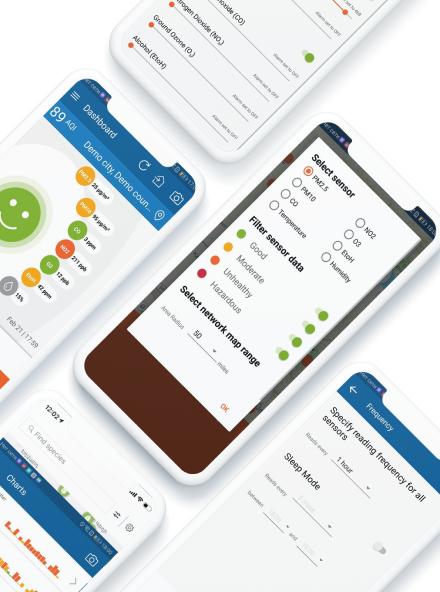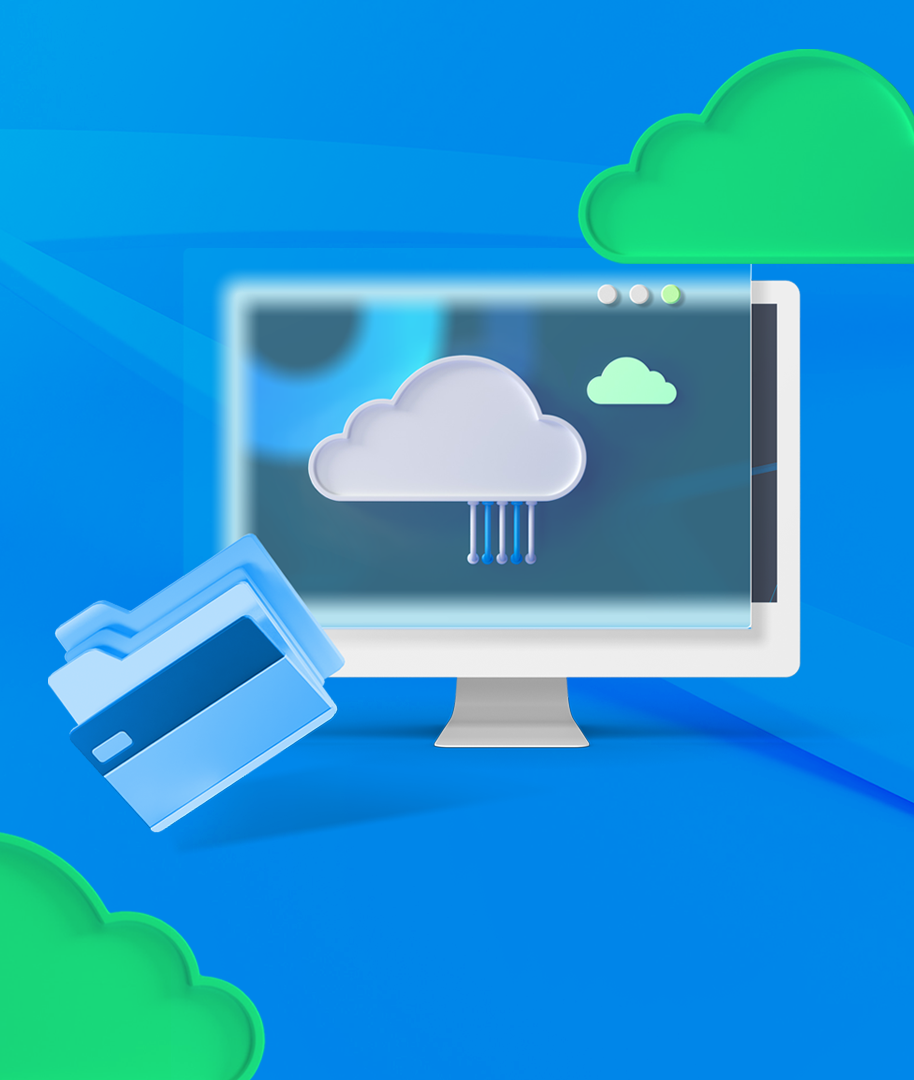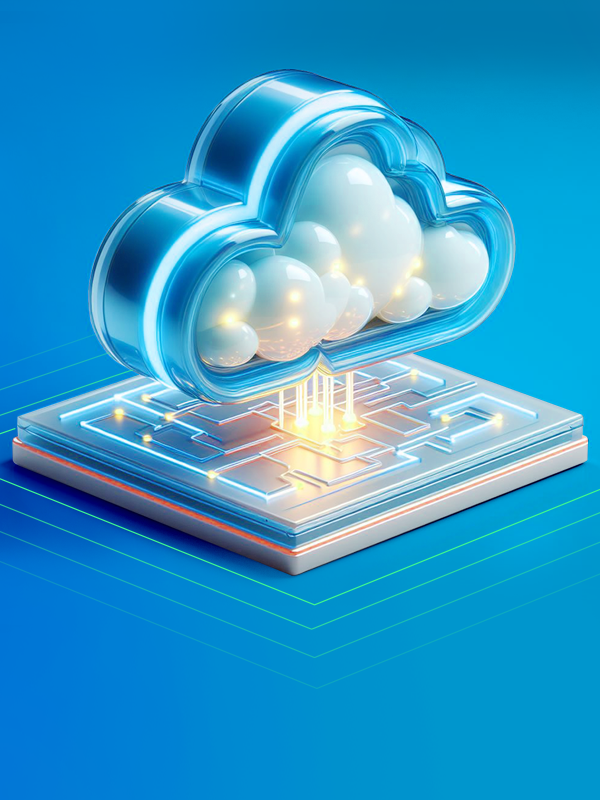
VOLO’s Approach to Legacy Transformation
9 Mar 2023
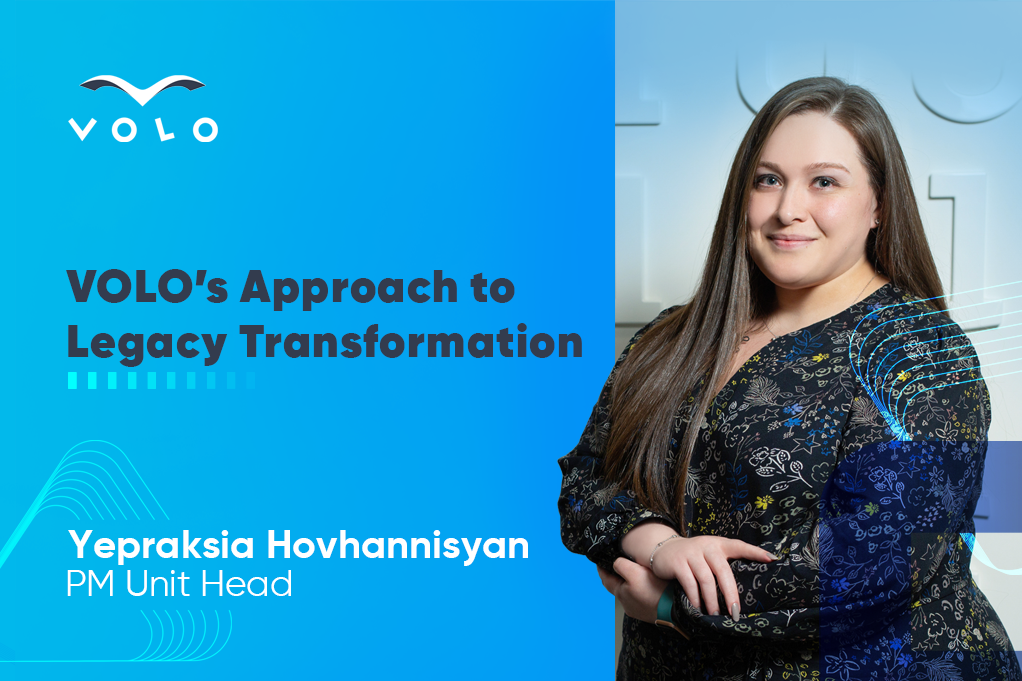
Digital transformation is getting expanded day by day; however, its growth rate is strictly dependent on the emerging technologies in the world.
To maintain their position in the market, companies should adapt their applications to those technologies, innovate continually and deliver value to the demanding customers as early as possible.
The companies that had undertaken digitization quite a few years or even decades ago are now most likely dealing with legacy applications.
A legacy application is a software that is obsolete, yet still in use by a company. This does not necessarily mean that the application no longer works. However, it can be unstable, have performance issues, and be technically limited (not flexible) to make necessary changes and satisfy the needs of the customers. This, in turn, prompts many companies to upgrade and revive their outdated systems.
Legacy app modernization is the process of improving, upgrading, or changing the existing application by integrating modern solutions and technologies.
VOLO’s Approach
Over the years, VOLO’s cross-functional teams have honed and fine-tuned a strategic framework to handle our partner-clients’ legacy app modernization projects. Although our framework has structure and guidelines, it is by no means rigid and is designed to be adjusted for each individual project, depending on the client’s goals, industry, market, urgency, and other factors. In short, our approach to app modernization is closely tied to our client’s goals and priorities.
The process starts with interviews and brainstorming sessions with the client to understand the product, their needs, and figure out whether their main goal is:
- to modernize the legacy app fully and to adjust it to modern technologies,
- to discover the pain points in the legacy app and make only partial modernization,
- to begin new development on the application (e.g., new business features, modules, etc.), and alongside, to conduct continuous modernization of the app.
Full or Partial Modernization
After gathering all of the requirements, VOLO’s tech team conducts a thorough assessment and analysis of the current infrastructure to understand how the outdated system affects the company’s business, customer experience, mainly focusing on the long-term effects. Our team investigates the system to evaluate its condition, the legacy environment, dependencies, application usage, data types, and any other issues that do or may have the most impact on the quality. The team also reviews the codebase, considers the licenses to be renewed, security requirements, etc.
The deliverable of this assessment is a document that may include, but is not limited to, the following information:
- issues revealed by providing the description and the risks related to them
- suggested approaches for modernization
- action plans based on the approaches
- alternative solutions, if applicable
- estimated time to implement the modernization
- suggested support type after the modernization
When assessing the risks, we mainly focus on the maintenance, operating costs, performance, data-related issues, compliance, support, security, etc.
I want to stress the fact that the outcome can also be a recommendation to retire the application altogether or keep it as it is. It all depends on the cost/benefit analysis of the investigation results.
Continuous Modernization
Many clients come to VOLO with issues seemingly unrelated to the continuous modernization. Examples of such issues can be being unable to eliminate bugs due to not being able to find their origin, not being able to add new features to the system due to incompatibilities, slow performance of the system, etc. After the tech team conducts the Discovery Phase, it often turns out to be an issue linked to a legacy app.
In case the client still wants to continue the development of the application in terms of business features, VOLO suggests the continuous modernization model.
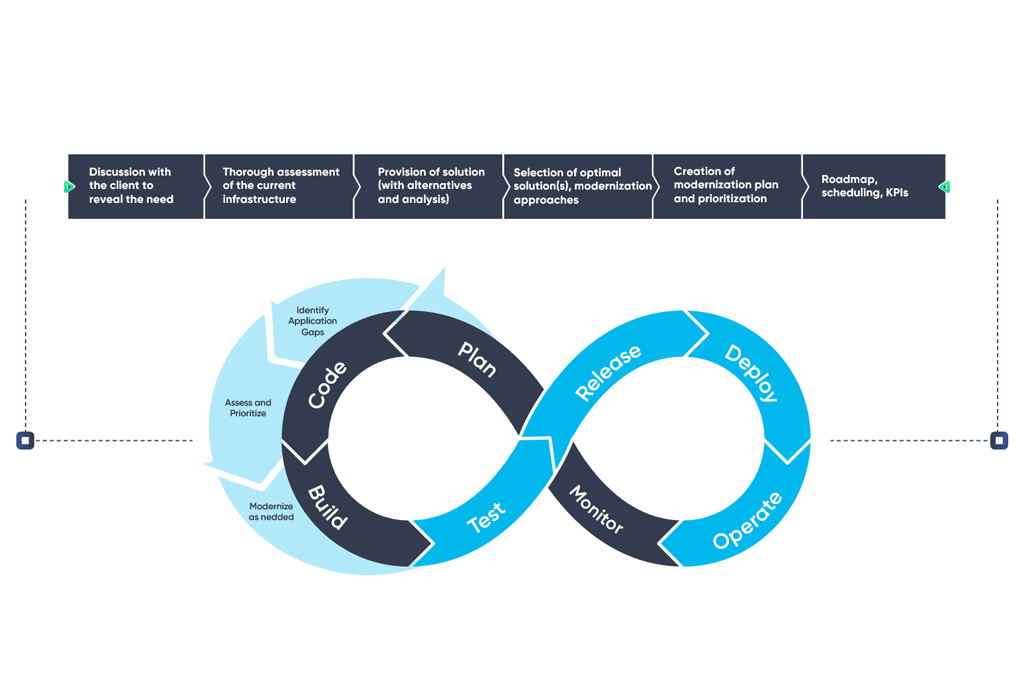
Let’s explain. Continuous modernization is a strategy to continually evolve the existing application to incorporate emerging technologies in it alongside the new feature development of the application. This model is agile, flexible and eliminates risks by making small changes rather than changing everything at once.
While deciding on which components to modernize, we are governed by the value vs. risk prioritization. In other words, if the component bears high risk if it is not modernized, and will bring high value if modernized, the modernization of that component becomes of a higher priority. If, on the other hand, a component has low risk and low value, it’s not treated as a priority and can be dealt with later. This type of approach to prioritize the modernization components is done iteratively in the Agile context to assess the risk and value as of that moment.
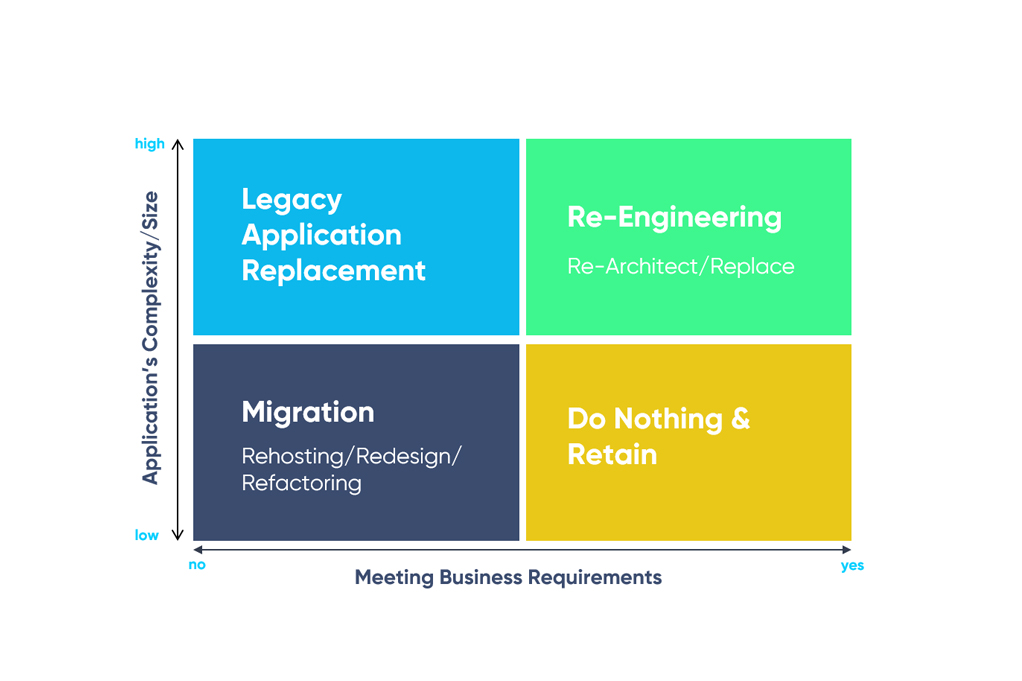
The entire process is communicated with the client to receive feedback and adjust the subsequent actions based on timely feedback and market demands.
Parting Thoughts
For many companies legacy transformation seems like such a tremendous task, that they develop task paralysis, and, as a result, keep putting it off until all the conditions are right. While this is perfectly understandable, it’s a perilous journey to take, because the longer you wait, it will become exponentially more difficult for you to tackle this task in the future.
With the right tech partner at your side, you will be able to first diagnose your software issues, and then break down your priority to-do list into digestible chunks so that you can take a non-disruptive path toward modernization.
For more insights into the matter, check out our webinar where our tech experts elaborate more on the app modernization process and answer some frequently asked questions.
More helpful resources:
- Outsourcing vs. In-House Development in 2024: A Comprehensive Analysis
- Outsourcing vs. In-House Software Development for Companies in the Commodities Industry
- Our Take on Software Development Outsourcing: An Interview with Armen Kocharyan
- The Team You Should Expect from Your Software Outsourcing Partner
- Exploring Armenia's IT Landscape: A Compelling Case for Outsourcing Software Development
- Your Complete Guide to Software Development Outsourcing
- Navigating Digital Transformation Services: A Guide for Industry Leaders in 2024
- How to Decide Between Offshore, Onshore, and Nearshore Software Outsourcing: Five Things to Consider

